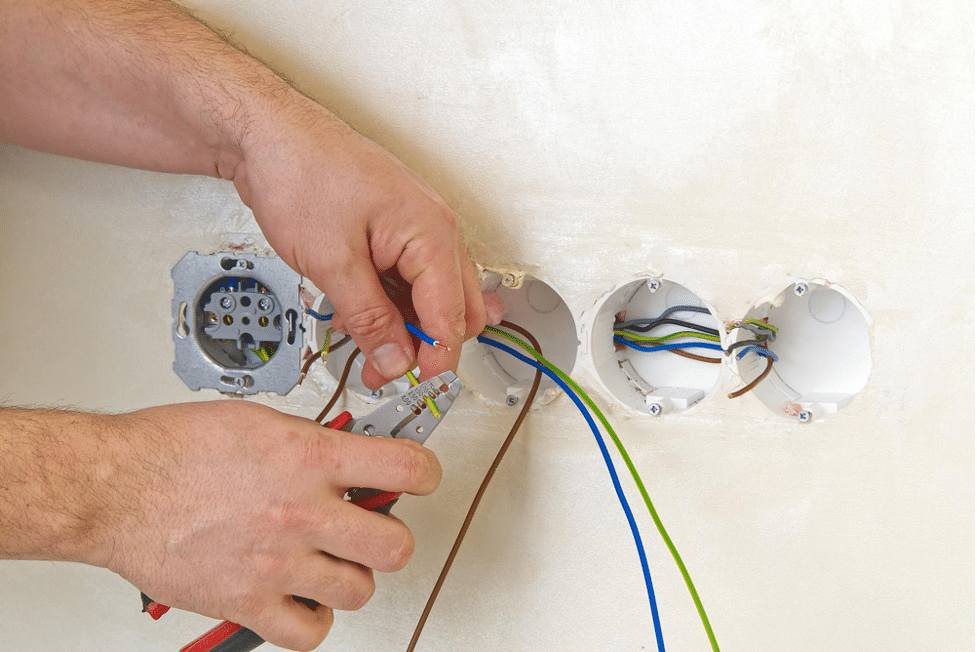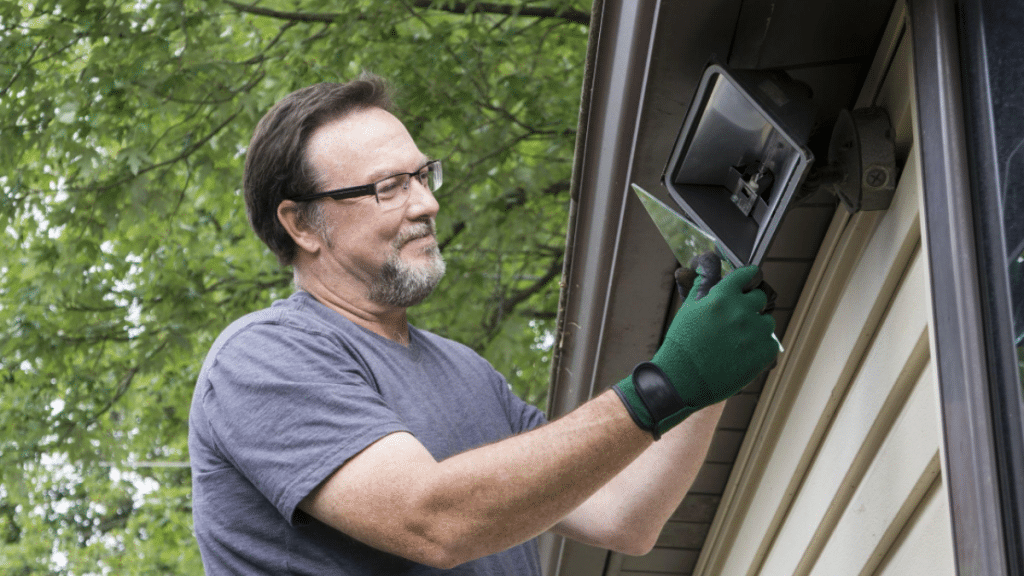Australia, with its diverse climate and housing styles, often necessitates frequent maintenance and occasional repairs, particularly in the realm of home electrical systems. Whether it’s flickering lights, malfunctioning outlets, or a tripped circuit, the need for electrical repairs is a common occurrence in many households. Each of these electrical issues requires careful consideration when deciding whether to roll up your sleeves for a DIY fix or call in a professional electrician. This choice isn’t just a matter of convenience but one involving critical safety considerations and financial repercussions.
When done without proper knowledge or attention, electrical work can pose significant safety hazards, potentially leading to injuries or even house fires. Thus, determining when it’s suitable to undertake a repair project alone or when it’s imperative to engage a licensed professional becomes paramount. The decision also intersects with financial implications because while DIY efforts might appear to save money initially, mistakes can end up costing more in the long run.
This article will explore vital points to aid in making an informed decision. These include understanding one’s skill level, recognising the safety concerns associated with electrical repairs, performing a cost-benefit analysis between DIY efforts and hiring a professional, identifying which tasks are generally appropriate for DIYers, and knowing when to seek the assistance of a professional electrician.
Understanding Your Skill Level
Knowing one’s limitations and strengths is crucial when addressing any form of home repair project, and electrical work is no exception. The first step involves assessing one’s current knowledge of electrical systems. Familiarity with fundamental concepts such as circuit types, voltage requirements, and grounding principles is essential. If these terms seem alien, it might be worth reconsidering a DIY approach or investing time in upskilling through courses or online tutorials.
Certain tasks might be well within reach for DIY enthusiasts. For example, replacing a light switch or a socket outlet falls under simpler tasks that do not typically demand extensive technical know-how. On the contrary, complex tasks like rewiring a home, installing new circuits, or troubleshooting a tripped safety switch tend to require a deep understanding of the electrical grid and adherence to stringent safety measures.
Another crucial aspect is continuously updating skills and knowledge. Engaging in short courses or online modules offered by reputable institutions can enhance one’s competence and confidence in handling basic to moderately challenging repairs. However, regardless of acquired skills, it’s important to always err on the side of caution. Understanding the difference between simple and sophisticated tasks can spell the difference between a successful repair and a potential disaster.
Safety Concerns in Electrical Repairs
Engaging in electrical repairs carries inherent risks, which must never be underestimated. It is crucial to be aware of common safety pitfalls associated with DIY electrical repairs. The risk of electric shock remains a preeminent concern and can occur when live wires are handled incorrectly. Other than electric shocks, poorly executed repairs could lead to short circuits, electrical fires, and exposure to hazardous materials.
Given these risks, investing in appropriate safety equipment is paramount. At the very least, this includes insulated tools, rubber-soled shoes, and voltage testers. Furthermore, foundational safety precautions need to be observed. Always turning off power at the main switchboard before commencing any repair, ensuring a dry working environment, and using proper lighting to maximise visibility are just a few essential steps.
Navigating the legislative landscape forms part of safely undertaking electrical repairs. Australia has clear regulations governing what constitutes acceptable electrical work for non-professionals. Typically, laws restrict unlicensed individuals from performing extensive wiring or installing new circuits due to the intricate nature of such tasks that could compromise safety.
Signals that a repair task might be too risky include situations where not all circuits can be confidently identified, outdated or damaged wiring, or when one’s understanding of the repair process is not steadfast. In such scenarios, deferring to a qualified electrician is not just a suggestion but a necessary step for safety.

Cost-Benefit Analysis of DIY vs. Hiring an Electrician
Figuring out the financial implications forms part and parcel of deciding between a DIY approach and hiring an electrician. Initial costs of tools and materials for DIY projects might present a substantial outlay, especially for those new to electrical work equipment. Voltmeters, wire strippers, and non-contact voltage detectors, while invaluable, do come with their respective price tags.
However, successful DIY repairs can offer long-term savings. Simple repairs done correctly can avoid service call fees and additional labour costs. But, there is an often-overlooked element: the hidden costs. If a repair attempt goes sideways, rectifying such errors can be costly, particularly if it results in property damage or additional complications.
Professional electrician services can appear expensive upfront. They include call-out charges, hourly fees, and sometimes, charges for parts or materials used. Nevertheless, an electrician brings value with warranty-backed work, code compliance assurance, and relieving the homeowner of complex, potentially hazardous endeavours.
Well-executed junior repairs can indeed offer savings, but the expertise and guarantees that come with professional services can frequently mitigate longer-term costs, especially in complex or recurring electrical issues. Therefore, weighing the potential financial benefits against safety assurances is a critical exercise in determining the appropriate course of action.
Types of Electrical Tasks for DIYers
For those with an adventurous spirit, several electrical tasks are generally safe and manageable through a DIY approach. Simple repairs might include replacing light bulbs, installing new light fixtures on existing outlets, or changing out faulty power points. These tasks often do not require extensive technical knowledge or invasive procedures.
The complexity of a task can often be gauged by its requirements. For instance, if a project requires understanding circuit diagrams or interacting with the main electrical grid, it might be too advanced for the average DIYer. On the other hand, when the repair is isolated to simple fixtures or appliances within the home, the work could be performed with suitable preparation.
Thorough research and preparation underpin any successful DIY project. Instructional videos, step-by-step guides, and consulting up-to-date manuals can facilitate better outcomes. Specific examples of feasible DIY projects include replacing light covers, installing basic ceiling fans, or adding plug-in timers for lamps and electronics. In each case, ensuring access to the correct tools and safety equipment is vital.
Effectively, there might even be DIYer community forums that provide advice, troubleshooting guides, and shared experiences to reinforce preparedness before a repair task. Understanding the task at hand and managing aspects methodically increases success rates while minimising potential risks.
When to Call a Professional Electrician
Despite enthusiasm for hands-on projects, some electrical repairs demand the expertise that only a licenced professional can provide. Recognising indicators for when to call a professional is crucial. These indicators include frequently tripping breakers, wiring sparking or overheating, or consistent issues with power supply to key appliances.
Legal implications also influence this decision. In much of Australia, unlicensed electrical work can invalidate home insurance or even result in hefty fines. Moreover, improperly executed repairs can create lasting hazards, not least fire risks that could have catastrophic consequences.
Electrical contractors offer distinct advantages, from indemnified work and professional-grade equipment to access to the latest industry techniques and compliance knowledge. They bring peace of mind, knowing that repairs are up to regulatory standards and safely completed.
Thus, when faced with a daunting repair, complex installations, or repairs involving multiple circuits, it becomes abundantly clear that a professional touch offers not just technical proficiency but also legal and personal safety protections that far outweigh the potential cost savings of doing it alone.
Conclusion
Ultimately, the decision between DIY and hiring an electrician relies heavily on specific situational factors. Understanding and accepting one’s skill level is fundamental—taking a realistic view of competencies can prevent unnecessary risks and ensure better outcomes. Recognising the inherent safety concerns, as well as being aware of potential legal liabilities, underpins any sound decision-making process involving electrical repairs. Enthusiasm for DIY tasks is commendable, yet knowing when to step back and seek expert assistance is equally important.
Navigating the decision boils down to several key elements: conducting a thorough analysis of the associated costs and benefits, assessing the complexity of the task, ensuring personal safety remains paramount, and ultimately opting for professional help when faced with uncertainty. In doing so, households can handle electrical repairs safely, efficiently, and cost-effectively, keeping safety at the forefront—indeed, a hallmark of responsible home ownership. The call to action for readers remains simple: think carefully, assess wisely, and commit to making informed and considered choices for each electrical repair task.
